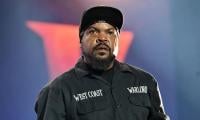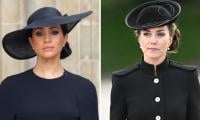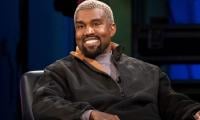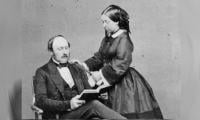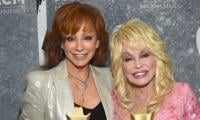MUMBAI: Apart from the fact that the letter ‘K’ is pronounced from the epiglottis (thank you, Shah Rukh Khan), did you know that words like ‘befizool’ and ‘befaltu’ don’t figure in the Urdu dictionary at all? While the magical and dreamy language still retains a hold over the city of Bhopal, it has been botched up ruthlessly by Bollywood and amateur speakers. In turn, the younger generation today – from aspiring Urdu poets to wannabe social media ‘shayars’ – are speaking a version of Urdu that’s far from the original one, Indian media reported.
When Gulzar provided the lyrics of ‘Goli maar bhejey mein’, none of the unit members of the under-production Satya (1998) liked it much. They preferred the dummy lines that composer Vishal Bhardwaj had written: ‘Gham ke neeche bum laga ke gham uda de’. Communicating this to the senior lyricist fell upon writer Anurag Kashyap, the rookie in the team. Gulzar listened to him and retorted, “Pehle GHam to bolna seekho,” and sent him packing.
A writer and a filmmaker, Kashyap should ideally know the intricacies of the language he’s working with. But it’s not incumbent on him because the onus of delivering the lines lies elsewhere. This luxury can’t be availed by the playback singers. By the looks of it, the present-day ones don’t consider it necessary either. Incorrect pronunciation of Urdu words is rampant in Hindi film songs and it tends to blemish many a good effort.
Till around the 1980s, save for occasional slip-up, this wasn’t much of a concern. The slide began in the 1990s, with a noticeable lack of attention towards phonetic norms. There were no turnarounds in the new millennium, which began on an ominous note. The songs of ‘Kaho Naa Pyar Hai’ (2000) burnt up the charts and contributed in no small measure to the huge success of the film. ‘Ek pal ka jeena’, the biggest hit of the album, became an anthem of sorts, off-target enunciation of words like ‘KHaali’, ‘KHaas’ and ‘KHushi’ notwithstanding.
The downward trend continued over the years and it’s come to a point where the errors have not only become acceptable but the singers seem to be oblivious to them as well. A layman getting it wrong may not be a big deal, but if a professional singer fumbles in the basics of a language that he/ she sings in, it’s not an encouraging sign. Inadvertent, one-off lapses can be overlooked, but nowadays singers repeat the same mistakes in numerous songs.
It must be mentioned here that sometimes the script necessitates deliberate mispronunciation to ensure that the songs are in sync with the speech traits of the characters, as in ‘Gunga Jumna’ (1961) and ‘Lagaan’ (2001). However, such motivations are few and far between and most of the glitches lack rationale.
The Hindi film song, which has served the cause of Urdu by keeping it alive among the masses when the language was faced with institutional apathy, finds itself at a crossroads. While the primary language employed by lyricists continues to be an Urdu-heavy Hindustani, a sizeable chunk of singers is not well-versed in it. A little attention to details and placement of the ‘nuqta’ (when written and read in Devanagari script) can help get things right.
Not all the yesteryear greats were born into Urdu-speaking households – in fact, save for Suraiya, Talat Mahmood and, to some degree, Mukesh, one can’t think of other big names from the 1950s, popularly called the Golden Age of Hindi film music, in this regard. The rest polished their articulation skills as part of their learning process.
A singer like Manna Dey would always be on a firm footing, thanks to his training in classical music under gurus like Ustad Aman Ali Khan, Ustad Abdul Rahman Khan and Ustad Ghulam Mustafa Khan. Jaddanbai was present at the studio when ‘Aayega aanewala’ (Mahal) was being recorded and later complimented Lata Mangeshkar on her impeccable rendering of the word baGHair. The prowess didn’t come easy – Mangeshkar had rigorously learnt the subtleties by hiring an Urdu tutor. In Nasreen Munni Kabir’s book Lata Mangeshkar: In Her Own Voice, the singer states, “When I speak, my Urdu isn’t good, but when I sing I make sure there are no flaws in my diction.” Asha Bhosle echoes the sentiment in a 2003 interview with Rediff: “Every Hindi singer needs to learn the nuances of the Urdu language.”
It is worth noting that the language itself is in no danger and continues to be widely spoken in the Hindustani-speaking parts of the country. It’s the script that has diminished and this has contributed to the decline in correct diction. In the old days, Urdu was part of mainstream education and hence the sounds were inculcated in speech right from one’s childhood. Mohammed Rafi and Shamshad Begum had roots in Punjab, where Urdu was the standard medium of learning; earlier singers like K L Saigal and Noor Jehan built their careers upon similar foundations.
Phonetics is accorded great importance in Urdu. For example, the ‘z’ sound is written and pronounced in four different ways. Therefore, not knowing the script will invariably lead to mistakes. Perhaps this is the reason behind a few slips in some of Kishore Kumar’s songs.
Peripheral factors also come into play. Unlike the bygone era in which someone like Naushad would be particular about grammar and pronunciation, contemporary composers aren’t so punctilious. Nor are the lyricists. There are times when even the vocabulary gets distorted. The filmmakers ought to shoulder some responsibility too. Speaking to Frontline in 2013, Gulzar said the new filmmakers “do not know much Hindi, and they know no Urdu. They usually speak in English, write in English […] Personally speaking, I make sure that any word I have written for a song is pronounced just the right way. I attend the recordings of all my songs.”
Film titles routinely come up with inaccurate spellings, thereby reinforcing the prevalent fallacies. The older films are equally culpable in this respect. ‘Karz, Kanoon, Yakeen, Kasoor, Kudrat, Ilaaka, Kurbaan, Keemat, Bewakoofiyan, Kaabil’ – the list can go on. Prolonged misuse can be damaging – words like ‘qismat’ and ‘qasam’ are nearly always written with a ‘k’ now.
At the crux is the fact that a vast majority of today’s audience is unfamiliar with the precise delivery of Urdu words and hence the mistakes mostly go unchecked. This again is because of the removal of Urdu from mainstream education, leading to a progressive decrease in people’s awareness. Given this, the pronunciation of unknown terms is generally shaped by way of what one gets to hear (and read). Cinema, with its tremendous reach and impact, plays a considerable role in influencing this understanding.
Earlier, in the years immediately following the Partition, the literary genius Sadaat Hasan Manto wrote a short fiction commenting on the strange language dispute that had been simmering since the earliest days of the freedom struggle. The Hindi vs Urdu debate appeared odd to Manto. He compared it to an imaginary debate over lemon-soda and lemon water. “Why are Hindus wasting their time supporting Hindi, and why are Muslims so beside themselves over the preservation of Urdu? A language is not made, it makes itself. And no amount of human effort can ever kill a language,” he noted in his story titled ‘Hindi aur Urdu’.
The Hindi vs Urdu debate was in fact just about a century old then. It is only from the mid 1800s that we see a gradual politicisation of the two languages, and their consequent polarisation. “It is a misconception that Hindus speak Hindi and Muslims speak Urdu. Reputed writers like Premchand and Amrita Pritam wrote in Urdu, even though they were not Muslims,” explained linguist and cultural activist Ganesh Devy. “Even today, Urdu is spoken in Punjab, Bihar, and Maharashtra very widely, and not just by Muslims,” he added.
In the 18th and early 19th centuries, Urdu was the predominant language in those areas of the subcontinent that are today called the ‘Hindi belt’. Historian Sumit Sarkar in his celebrated book, ‘Modern India, 1885-1947’, noted: “Urdu had been the language of polite culture over a big part of north India, for Hindus quite as much for Muslims.” He elaborated: “As late as 1881-90, 4,380 Urdu books had been published in UP as compared to 2,793 in Hindi, while the corresponding circulation figures for newspapers were 16,256 for Urdu and 8,002 for Hindi.”
At the time when the English East India Company (EIC) started making inroads in the Indian subcontinent, Persian was the official language of administration in the Mughal empire. In the 1830s, the EIC replaced Persian with English at the higher levels of administration and local vernaculars at the lower levels. This meant that in large parts of north India, Urdu took the place of Persian.
Consequently, from the 1860s, a large scale controversy erupted over what should be the official language in north India. The debate took the form of literary works like plays and poetry, petitions, memorandums, gloating over the merits of Hindi and Urdu.
As proponents of Hindi started spelling out the merits of having Hindi as the official language of administration, they drew upon narratives emphasising that the language belonged to the original inhabitants of India, and that it was in popular use before the Muslims took over large parts of the country.
Babu Shiva Prasad of Benaras, an official in the department of public instruction was one of the first to publish such a memorandum. In his work, ‘Memorandum: Court characters in the upper provinces of India’, he wrote: when the Muslims took possession of India, they found Hindi the language of the country, and the same character the medium through which all language was carried on. Prasad argued that the new Muslim rulers did not bother learning the new language, rather forced the Hindus to learn Persian. Consequently, he wrote that by making Hindi the language of administration, not only would the masses be able to understand court proceedings, but also ‘Hindu nationality’ would be restored.
Many believe that the Hindi-Urdu controversy of the 19th century contained the seeds of Muslim separatism, and found itself finally manifesting in the Partition of the country. The religious dichotomy between the two languages acquired further currency when Pakistan adopted Urdu as its national and official language, and India adopted Hindi along with English as its official language.
